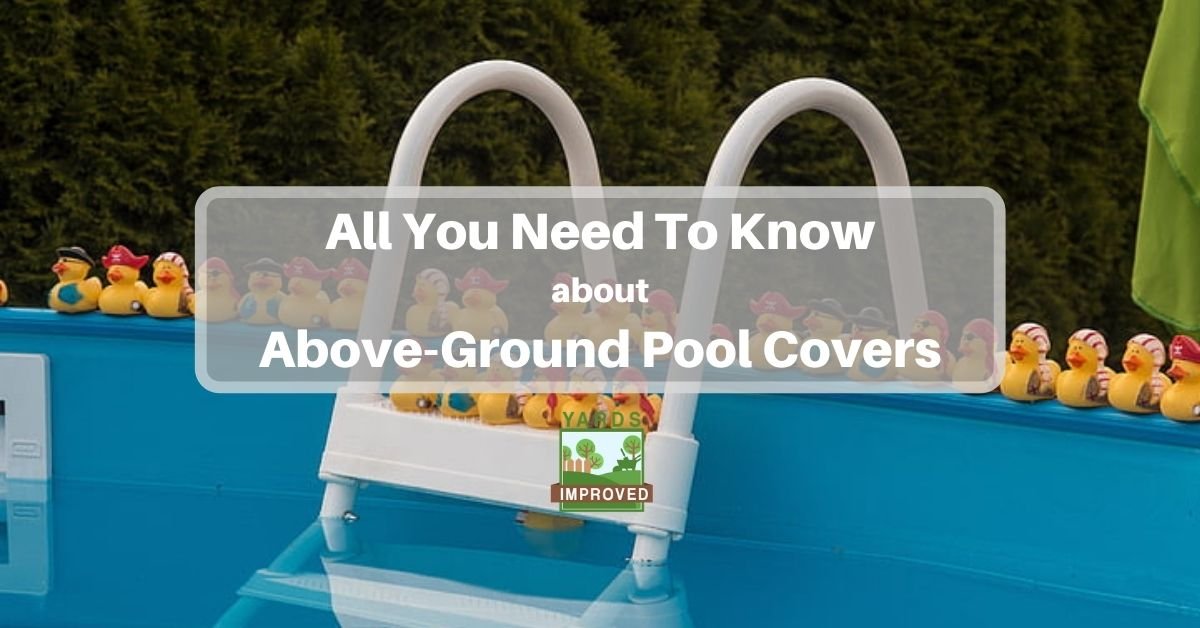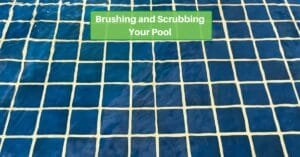In most places, the end of summer includes the sad moment of shutting down our swimming pools for the season. As depressing as that may be, we can at least look forward to next year. To make it easier to open the pool again, we do have to take a few basic steps. Covering the pool is one of the most important.
Here we’ll talk about what you need to know about covers for your above-ground pool. There are various types to consider. Of course, you’ll have to choose the right size for your pool as well.
Benefits
A pool cover provides two main benefits. Different types of cover may excel in one or the other.
First, a cover keeps debris out of your pool. Whether you have trees around your pool or not, odds are that leaves will find their way to the surface. So will twigs and maybe even trash. One purpose of a pool cover is to keep this debris out of the water in your pool. You’ll simply have to gather the debris off the cover. This spares the pool from the debris and the harmful contamination that would result from decomposition.
Also, a cover helps keep water out of the pool. If you’ve already been taking care of a pool, you know how much rainwater can alter the chemistry of the water. And the amount of rain that can fall during the “offseason” can be considerable! By keeping some of this untreated water out of the pool, you’ll have less work to calibrate the water in the pool next year.
Get more advice about closing your pool for winter!
Types of Above-Ground Pool Cover
Pool covers come in two basic types – solid or mesh. There are also other “features” they may have depending on your needs and preferences.
A solid pool cover keeps both debris and water from entering your pool. It covers the whole surface and does the best job preserving the state of your pool water.
On the other hand, water accumulates on the surface of a solid cover. You’ll have to occasionally suction it off. Otherwise, the weight could cause damage to it. The water could also freeze, causing more damage.
A mesh pool cover allows water to pass through but keeps leaves, twigs, and other material out. Depending on how much debris falls in your yard, you’ll likely still have to clean it off a couple of times. But that will be less often than with a solid cover. You won’t have to worry about water freezing on top, but the water in the pool itself may freeze more easily with a mesh cover.

Some solid covers are called “solar covers.” They are coated or made with material that will transfer heat from sunlight into the pool water below. This helps keep the water above the freezing point.
There are also leaf covers that can be used over the top of a solid cover. These catch the debris, making it easier for you to remove it. Rain and snow will pass through this cover but still be caught by the solid cover.
Keep in mind that none of these covers are designed to protect children from falling in. There are protective safety covers for pools, also. But the covers we’re talking about here are not safety equipment – they’re only to help keep the pool clean.
Accessories You’ll Want
There are a few items that you’ll want to have in addition to the pool cover itself.
Covers are typically held in place with clamps or cables of some sort. Sometimes these are included, but you may have to buy them separately. Be sure to check out the requirements for your pool and cover.
Air pillows are another important element. These float on your pool’s water and hold the cover out of the water. The cover drapes across these. For most pools, you’ll need several air pillows strategically placed to provide adequate support for the cover.
Most above-ground pool covers overlap the edge of the pool. Still, wind can get under them and lift them. Wall bags help prevent this. They’re filled with water and sit on top of the cover at the pool’s edge. Even a mesh cover can benefit from these since the mesh is fine and the wind is still likely to pick it up.
You’ll also want to clean your cover from time to time over the winter. A pool skimmer (aka pool rake) can help you remove leaves and more. Skimmers also have smooth edges that are safe and won’t tear the cover.
To get water off the cover you’ll want a pool cover pump. You could toss one end of a hose into the center of the pool cover and suck on the other end until the water starts flowing, but….yuck. Instead, invest in a pump (they’re not that expensive) and let it use water pressure or an electric motor to pump the water out. There are even some that automatically detect when they need to run.
Storing Your Pool Cover
Once the time rolls around to open the pool in spring, you want to be sure to store your pool cover carefully.
After removing the debris and water from atop it, detach the cables or clamps. Be sure they’re cleaned off and dry before storing them.
Be sure to also clean the cover itself and let it dry before folding it for storage. You can use a mild detergent. If you find mold starting to grow, use diluted bleach. A pool brush works great, especially on solid covers. You can also use a pressure washer to do the job.
Spread your cover out to let it dry. Be sure that both sides have the chance to dry out. Then fold it and keep it in a dry place until you need it again.
Conclusion
A pool cover will protect your pool all winter long. It will help keep out dead leaves, branches, and other contaminants. Some types will even keep out rainwater, which could dramatically alter the pool water chemistry. There are several types of cover available. Be sure to take good care of it while it’s in use and you’ll have less work to do when you open the pool again!









